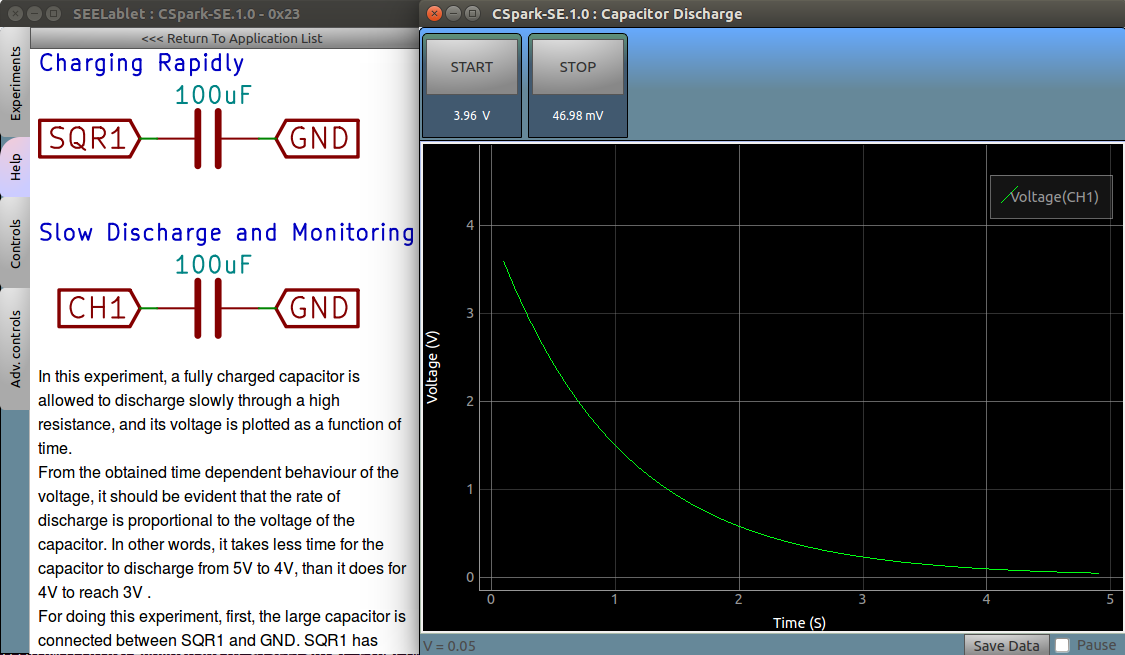Voltage across a discharging capacitor

In this experiment, a fully charged capacitor is allowed to discharge slowly through a high resistance, and its voltage is plotted as a function of time.
From the obtained time dependent behaviour of the voltage, it should be evident that the rate of discharge is proportional to the voltage of the capacitor. In other words, it takes less time for the capacitor to discharge from 5V to 4V, than it does for 4V to reach 3V .
For doing this experiment, first, the large capacitor is connected between SQR1 and GND. SQR1 has already been set to 5V, and will charge the capacitor to almost its full capacity in less than a second.
Disconnect the capacitor from SQR1, and connect it between CH1 and GND. Since CH1 is a voltmeter with an input resistance of 1MegaOhm, the capacitor will slowly discharge through CH1.
Now click on the START button to start recording this voltage along with time.
Distributing charges between capacitors
You will need two capacitors.
Charge one capacitor by connecting it between SQR1, and GND. And ensure that the other one is fully discharged, by shorting its two leads together
Now disconnect capacitor 1, and connect it in parallel with capacitor 2. The charge stored in the first one will be distributed across the two.
An appropriate analogy for what was done, can be achieved by comparing them to buckets of water. If an empty bucket, and a filled bucket of the same size are connected via a pipe near their bases, their water levels will be equal.
If you use two different capacitors, imagine two buckets of the same height, but different widths. Even though their levels will equalize when connected, the wider bucket will gain/lose a lot less water than the smaller one.
Screenshot

